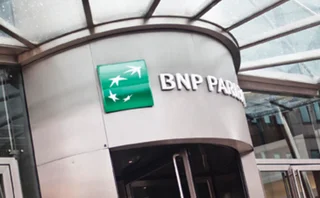
Simplify bursts into equity index options lead
Counterparty Radar: US mutual funds added exposure to sector in Q3

Simplify Asset Management added $39.1 billion of equity index options notional to its books in the third quarter of 2022, becoming the most active US mutual fund and exchange-traded fund (ETF) manager in the space. The increase skewed heavily towards puts, growing the firm’s book seventy-one-fold.
US funds expanded their equity index options positions by $42.9 billion in Q3, pushing the market to $159 billion, the highest in the 11 quarters of data for mutual funds and ETFs starting Q1 2020
Only users who have a paid subscription or are part of a corporate subscription are able to print or copy content.
To access these options, along with all other subscription benefits, please contact info@risk.net or view our subscription options here: http://subscriptions.risk.net/subscribe
You are currently unable to print this content. Please contact info@risk.net to find out more.
You are currently unable to copy this content. Please contact info@risk.net to find out more.
Copyright Infopro Digital Limited. All rights reserved.
As outlined in our terms and conditions, https://www.infopro-digital.com/terms-and-conditions/subscriptions/ (point 2.4), printing is limited to a single copy.
If you would like to purchase additional rights please email info@risk.net
Copyright Infopro Digital Limited. All rights reserved.
You may share this content using our article tools. As outlined in our terms and conditions, https://www.infopro-digital.com/terms-and-conditions/subscriptions/ (clause 2.4), an Authorised User may only make one copy of the materials for their own personal use. You must also comply with the restrictions in clause 2.5.
If you would like to purchase additional rights please email info@risk.net
More on Derivatives
BNPP overtakes Barclays in Ucits single-name CDSs
Counterparty Radar: Europe’s retail funds shed notional but used wider range of underlyings, new data shows
BNP Paribas’ FX forwards notional jumps 75% in Q2
Counterparty Radar: French bank’s increased trading with Pimco lifts it into top spot
Pricing and valuation systems 2024: market and vendor landscape
This Chartis report evaluates the comprehensive landscape of pricing and valuation systems, considering the unique demands of different financial assets, as well as their market dynamics and interdependencies and the technological architecture…
Citi revealed as top index CDS dealer to Ucits funds
Counterparty Radar: Novel data shows US banks captured nearly 90% of uncleared notional volume in European markets
How Risk.net’s robots unlocked Ucits trade data
Machine learning tool helps reveal the largest European derivatives users – and who they trade with
Vanguard stages swaptions comeback
Counterparty Radar: Deutsche grew book to $11 billion in Q1 to become largest non-US swaptions dealer to mutual funds
Zero-day hedging takes root in new asset classes
Option users move beyond equity indexes in search of cheaper, sharper hedging tools
CVA swap: a new type of capital relief trade
Dmitry Pugachevsky, Quantifi, discusses the emergence of the CVA swaps market







